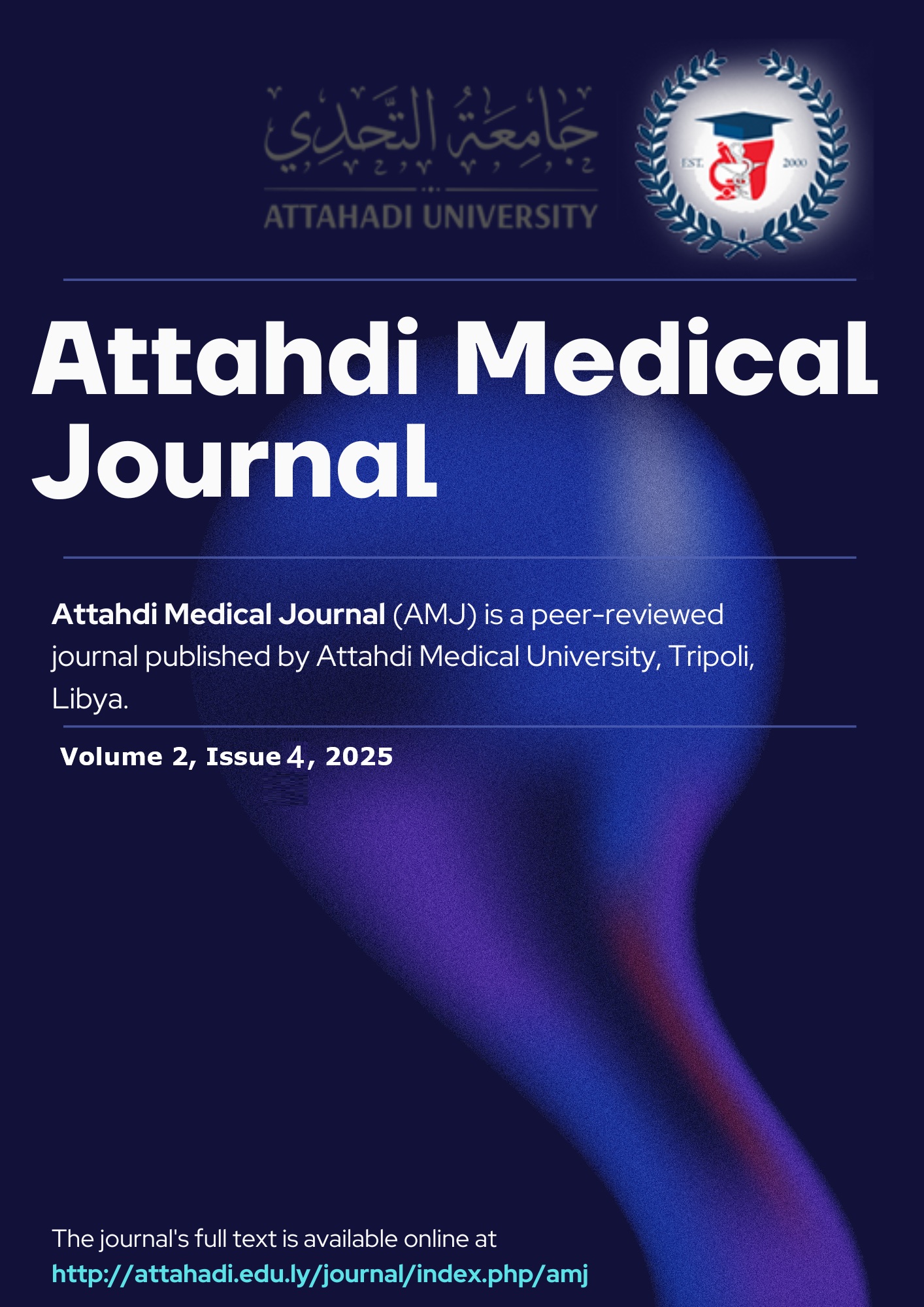Renal and Metabolic Biomarker Profiles in Dialysis vs. Non-Dialysis CKD Patients: A Cross-Sectional Study.
DOI:
https://doi.org/10.69667/amj.25402Keywords:
Chronic Kidney Disease, Electrolytes Urea, Creatinine Uric Acid, Glomerular Filtration Rate, Dialysis.Abstract
This study investigated key renal and biochemical parameters in Chronic Kidney Disease (CKD) patients by comparing a cohort of 147 non-dialysis patients with 147 patients undergoing dialysis. Key findings indicate that while both groups exhibited elevated urea and creatinine levels, urea was lower in dialysis patients, whereas creatinine was significantly higher. Blood pressure was minimally increased in both groups, but was higher in the non-dialysis cohort. Uric acid levels were notably lower in patients on dialysis. Regarding electrolytes, potassium levels were higher in the dialysis group, while sodium levels remained normal and stable across both cohorts. Serum phosphorus was elevated in both groups, with slightly higher levels in non-dialysis patients. A significant difference was observed in serum calcium, which was normal in non-dialysis patients but below the normal range in the dialysis group. Both groups also showed elevated fasting blood sugar. As expected, Glomerular Filtration Rate (GFR) was sharply decreased in all patients, most severely in the dialysis group, consistent with end-stage renal disease. The results underscore the profound metabolic and physiological changes in CKD patients. The study concludes that enhancing dialysis efficiency and providing comprehensive patient education on medication, diet, and lifestyle are critical for improving quality of life, reducing complications, and lowering healthcare costs associated with CKD management












